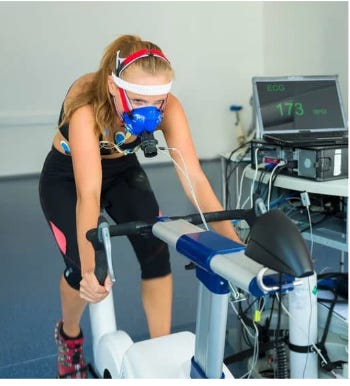Longevity Indicators for Humans and Teams: V̇O2 max & Durable Delivery
First of all, how do we define longevity for humans and teams?
Longevity for individuals refers to living a long and healthy life - it encompasses life span and health span.
Longevity for teams is the sustained ability to deliver value and adapt to change without burnout shown by teams. It’s about ensuring engineering teams remain constantly excellent (see the five core characteristics in a previous article).
V̇O2 max and Longevity
V̇O2 max is widely considered one of the most accurate indicators for predicting longevity for individuals. A 2018 research study shows that “V̇O2 max is a strong and independent predictor of all-cause and disease-specific mortality, suggesting a correlation with longevity.”
It measures how efficiently your body delivers oxygen to your muscles during exercise. It expresses the ability of your heart, lungs, and muscles to work together seamlessly.
Higher V̇O2 max scores correlate to:
Reduced Risk of Cardiovascular Disease: Individuals with higher VO2 max have more efficient hearts, reducing the risk of heart attacks and strokes.
Improved Metabolic Health: A high VO2 max enhances your body’s ability to regulate blood sugar and fat metabolism, reducing the risk of diabetes and obesity.
Increased Resilience: High VO2 max enables quicker recovery from exertion, allowing sustained physical activity and reducing fatigue.
Athletes improve V̇O2 max through a careful balance: sustained, aerobic work (most of the training) and high-intensity intervals (the minority). Research studies point out that both types of training are needed. This study shows the importance of High-Intensity Interval Training (HIIT), and this other study shows the importance of aerobic training.
Durable Delivery and Longevity
Durable delivery is a good indicator of team longevity. It involves continuously executing on time, on budget, and with quality.
Similarly to V̇O2 max, durable delivery requires the team to be functional in multiple areas (planning, implementation, verification, launch, team morale, etc).
Durable delivery has different aspects, and engineering leaders are accountable for increasing this indicator - Let’s look at a few interesting parts:
Delivering according to plan is at the core of durable delivery. It’s key to predictably executing features, bug fixes, and improvements, meeting budget and timeline constraints, and maintaining high quality. Engineering leaders must ensure their team has a plan and then use processes to stick to it.
Balancing product roadmap, tech items, and KTLO (Keep The Lights On): This applies mainly to Product Engineering teams. Engineering leaders must allocate people to roadmap items, tech debt, bugs, etc., dynamically and based on priorities. Similarly to aerobic training, roadmap items should receive most of the allocation, and tech items, explorations, and bug fixes are similar to high-intensity intervals (less allocation but still very important).
Continuous Learning: Teams that incorporate time for continuous learning are better equipped to handle change and recover from setbacks more efficiently like a well-trained athlete recovering more efficiently. Engineering leaders need to champion a growth mindset and curiosity. This previous article has more continuous learning.
Fast recovery: Setbacks, failures (e.g., incidents), and significant shifts are frequent, and teams need to be adaptable to them. Engineering leaders must embrace continuous changes and focus on how the team can quickly recover, reset, and focus on new goals.
Measuring VO2Max and Sustainable Delivery
The most accurate way to measure VO2 max is to execute a test in a controlled environment using specialized equipment. The test will give you a score that might vary based on your endurance level. See this sheet for a recap of what the score means for your age and gender.
For teams, catching durable delivery might not be as straightforward; engineering leaders could use a combined set of metrics:
Rate of projects delivered on time - this can be based on how many projects run according to the initial plan (usually established after a Technical Design Document is completed)
Lead Time is the time it takes to deliver value from ideation to deployment. Measuring this absolute value over time could help us understand the speed at which the overall XFN team moves forward.
Mean Time to Recover (MTTR) is how quickly the team recovers from incidents.
Number of Bugs within SLA: Track the number of bugs within a specific SLA. Assuming the severity of a bug affects the specific SLA, this can help monitor quality.
Engagement score is about tracking the team morale, which can be executed through a pulse survey.
Like individuals with high VO2 who are more likely to live a longer and healthier life, teams emphasizing durable delivery continue to thrive, adapt, and perform over time.





